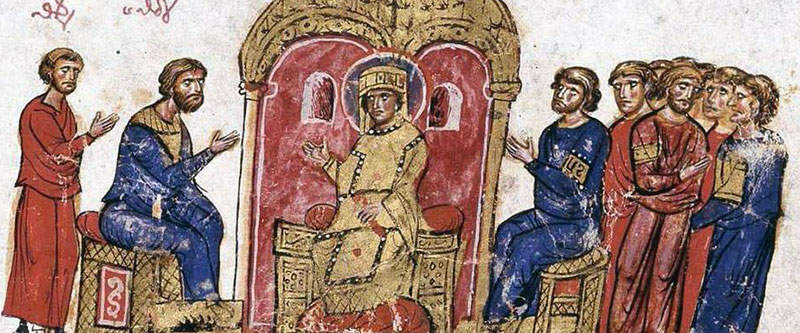“I am reminded of your sincere faith, a faith that dwelt first in your grandmother Lois and your mother Eunice and now, I am sure, dwells in you as well. For this reason I remind you to fan into flame the gift of God, which is in you through the laying on of my hands, for God gave us a spirit not of fear but of power and love and self-control.“
(2 Timothy 1:5-7)
As much as a father like to fix his son’s behavior, the most important thing he can leave him with is the very thing that gives meaning and structure to life. And that thing is not found in good behavior. To only instill good behavior in our sons is to give them a fish, but not a fishing pole. There is tremendous benefit for life in learning social graces, courtesies and so on. In a Christian home, specific commandments and their applications as derived from God’s word will help sons know how holiness is rightly expressed. And a good father will teach these things. Yet, a father cannot be satisfied sending his son out of his home, knowing that he is a “fine young man.” He must show to his son an abiding focal point that will motivate and direct a young man to consider why he does what he does no matter what circumstances he may face in life. And this focal point is only found in the gospel.
In using the word “gospel” what is in view is the good news of salvation for sinners through the blood of Christ received by faith. And though it may seem like it is abstract and intangible, in reality it is quite different. A right understanding of the gospel will touch every part of life. It will effect what is done in marriage, as a father, in prayer and study of God’s word, what church is attended and served, how money is managed, sexual faithfulness, and even how a man prepares for death. If those issues are not pressing into a young man’s “present”, he will face them one day or another. This gospel must be known, understood, and received by faith. So what is this gospel, specifically?
The gospel cannot be reduced to a slick phrase, a slogan, or a bumper sticker. These kinds of catchy sayings are all around us, thanks in no small part to the advertising industry. Tag lines are remembered, jingles can be sung long after they have been heard, and yet life cannot be ordered around them. There is, in a sense, a simple gospel message, but the reality and the full weight of the gospel is understood when the context within which this good news is given is felt. The message itself and the context of it are given in the Bible, God’s story of the way He saves sinful man by the blood of His Son.
The summary statement talks of forgiveness by the gracious application of the blood of Christ by the Holy Spirit to the heart of sinful men through faith in His perfect obedience and sacrifice. But around that simple statement is the larger context of that message of hope. That context includes God as creator making all things visible and invisible. God who rules and reigns over this creation, who sets the rules, and determines consequences and punishments. It includes man as sinner, eternally indebted to the creator for his many sins against Him. It includes Christ as redeemer, shedding His precious blood to satisfy the debt owed by men. These things must be known, and when they are they serve as a foundation for a grateful life.


